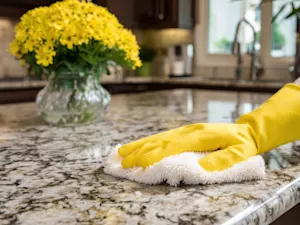
Why Can't You Taste Your Spoon?
We'd like you to do an experiment with us. We'd like you to find a clean spoon or fork (please don't use a knife, we don't need that kind of liability) and lick it.
Okay, now that you've done that... Can you describe the taste of the utensil?
The answer is most likely "no," but have you considered how unusual that is? Almost everything has a taste of some kind. Even if you lick a (clean) penny, you'll note the distinct coppery flavor. Yet your spoon is virtually tasteless. Why?
You might remember that your eating utensils – and quite a few other things in your house – are made of stainless steel. So, the question becomes, "What is stainless steel?"
What Is Steel?
Steel is an alloy, or a metal composed of two other metals or elements. In this case, steel is iron and carbon, with iron making up about 96%-99% of the material. Although humanity has long known about steel and has found various ways to make it, up until the late 19th century it remained a highly unreliable process (if you add too much carbon to steel, you actually weaken the metal). Moreover, up until the 20th century and the emergence of metallurgy as a field of study, humans weren't even sure how steel formed.
Nevertheless, steel remained desirable throughout history because (to the surprise of no one) it's a very strong metal... with one little weakness. It and its component metal, iron, don't do well when they come into contact with water or any sort of moisture. Not to worry! It's not like we live on a planet that's 75% water or anything!

Oh wait...
Some of you might already know where this is going: When steel or iron become exposed to water, they undergo a chemical reaction and form iron oxide, a reddish-brown dust-like substance better known as rust. Rust corrodes; it eats away at the metal and exposes more of it to water or moisture, creating a vicious cycle of damage until the material is unusable.
Incidentally, knights and other warriors would oil the inside of their scabbards to help fortify their swords against moisture in the atmosphere. After all, swords are expensive, and no one wants to keep buying new ones just because the old ones got rusty.

So, how to fix that problem?
The Stainless-Steel Solution
In 1913, English metallurgist Harry Brearley practically stumbled onto one of the most under-recognized yet incredible discoveries of the 20th century: A steel that did not rust. While looking for a stronger steel for the British government, Brearley combined carbon and the element chromium in the right ratio to make stainless steel.
Some of you might be thinking, "Oh, so the chromium stops the steel from reacting with the water?" And the answer is no, but when paired with water, chromium tells a different story. Chromium also reacts with water; in fact, it reacts with water much faster than iron does. However, when chromium reacts with water, it forms a mineral called chromium oxide, a mineral you can think of as "anti-rust."
Unlike rust, chromium oxide sticks to steel instead of flaking off, and it's completely transparent. Better yet, instead of corroding the metal, it coats the steel so moisture can't touch it. As a side effect of this, your tongue never actually touches the metal of your stainless-steel spoon. Instead, it slides off the completely flavorless chromium oxide, so your scoop of ice cream never tastes metallic.

Sometimes, you have to stop and appreciate the little things in life, like nonmetallic vanilla bean ice cream.
Reference: Miodownik, Mark. Stuff Matters: Exploring the Marvelous Materials that Shape Our Man-Made World. London, Penguin Books, 2013.
























